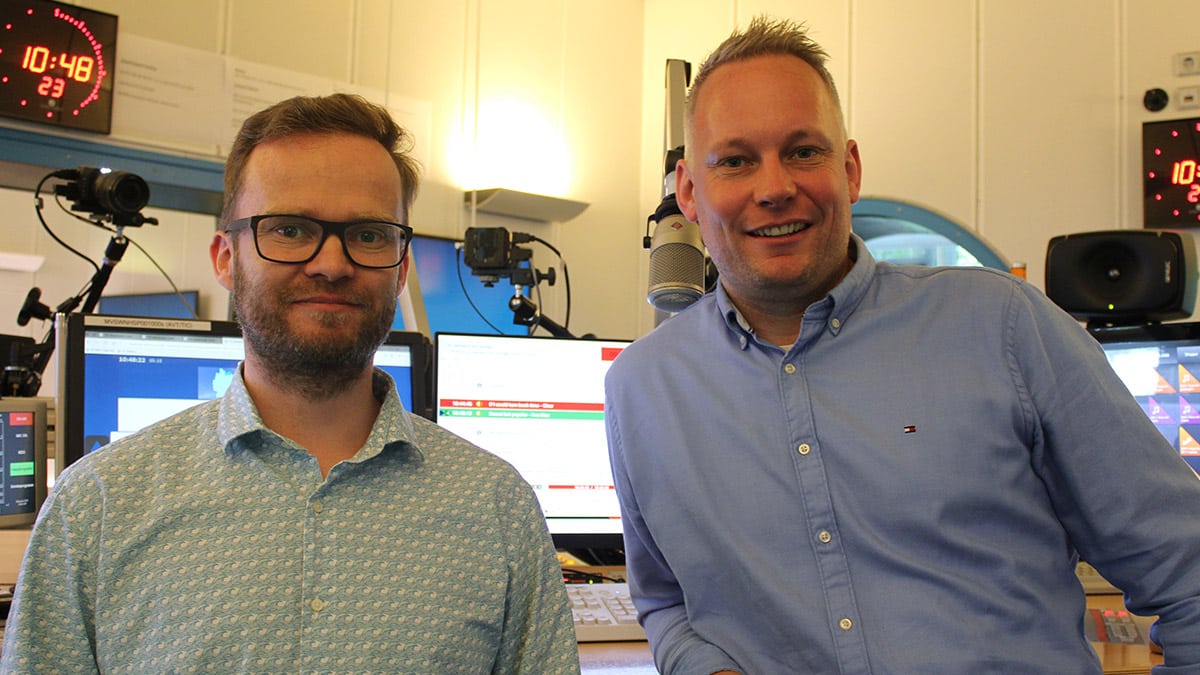SCHWERIN, Germany — The visual radio project at Hamburg-based public TV and radio broadcaster NDR1 has successfully transformed the whole experience for our presenters. Located south of the Baltic coast, touching Poland in the east and Hamburg in the west, our radio station is part of Germany’s national broadcaster. It covers news and local interest stories for the area.
We wanted to find different ways to engage with our listeners, so we decided to make the move into visual radio. This choice led to a complete technology upgrade to ensure that we delivered the proper audio performance for our presenters while also delivering a clean look for the camera.
The first thing the architect mentioned was the big bulky speakers. They weren’t that big but were square and at eye level. Also, they were ten years old, and in a broadcast environment where devices are running 24/7, they were pretty much worn out. We had a choice: repair them or go with something else.
Finding new monitors
We decided to invest in a new monitoring system that would better fit the new aesthetic, and I was tasked with the project. I went to the Tonnmeistertagung audio industry convention to look for some new monitors, where I spoke to manufacturers and discussed the potential for custom colors. I walked past the Genelec booth, and Eric Horstmann approached me to see if I wanted to hear The Ones series of coaxial three-way monitors. I heard them and then came back every day to listen, they so floored me. They sounded great from the start, and I pretty much knew that I wanted these speakers.
Following this experience, I decided to combine a pair of Genelec 8331A Smart Active Monitors with a 7360A subwoofer in each of the two studios. Usually in radio studios you have quite small speakers. I thought this could be an opportunity to get a bigger system with a subwoofer, not only because it would be fun but because it would create an atmosphere for the presenters in the studio. Most of our presenters are avid music lovers, so they turn the music up and become very happy – even before they turn on their microphones and talk to 400,000 people.
Most of our presenters are avid music lovers, so they turn the music up and become very happy – even before they turn on their microphones and talk to 400,000 people.
The decision to opt for the smallest member of The Ones family was also a popular choice for our team since we were focused on the visual radio element. The 8331s appear smaller than they really are, and the architect liked them.
The monitor installation was probably the most straightforward part of the project. Both studios needed calibrating using Genelec’s GLM loudspeaker management software as they are not precisely the same, and I’m astonished at how well GLM works. It makes the speakers shine even more, and they can deliver a broad range of music.
Going visual
With the audio upgrade delivered and suitably styled for the camera, we needed to look at the visual signal chain to see what would work for us. For the visual side, we are completely in the Blackmagic Design universe. After a lot of research, we opted for their cameras and video mixer due to the intelligent functions we could use.
The Blackmagic video mixer is controlled by external logic, so it automatically cuts the video to who is speaking in the same way a person would. It uses fuzzy logic, so it doesn’t do the same cut every time. The main goal of the visual radio project was to avoid disturbing the presenters and ensure that the video followed the audio. They are doing their radio job, but it should look good. It works well!
NDR1’s new look
The result has been extremely positive, although there was one major change from the original brief. In the end, we decided not to have the monitors in custom colors. Our station color is turquoise, which would have looked too bold in the studio. The monitors are anthracite, and most of our screens have a black frame, so it fits well. It has ended up looking fantastic.
Most importantly, the new studios are working well for our new remit as a visual radio station. It’s a well-balanced system and sounds great at low volumes. Sometimes we have musicians as guests to talk about their new album, and previously it was hard to hear on the co-host’s side of the studio without headphones, but now they can listen properly, which sets the mood for the interview. The presenters love the monitors.
The author is production engineer for NDR1 radio in the German state of Mecklenburg Vorpommern.

